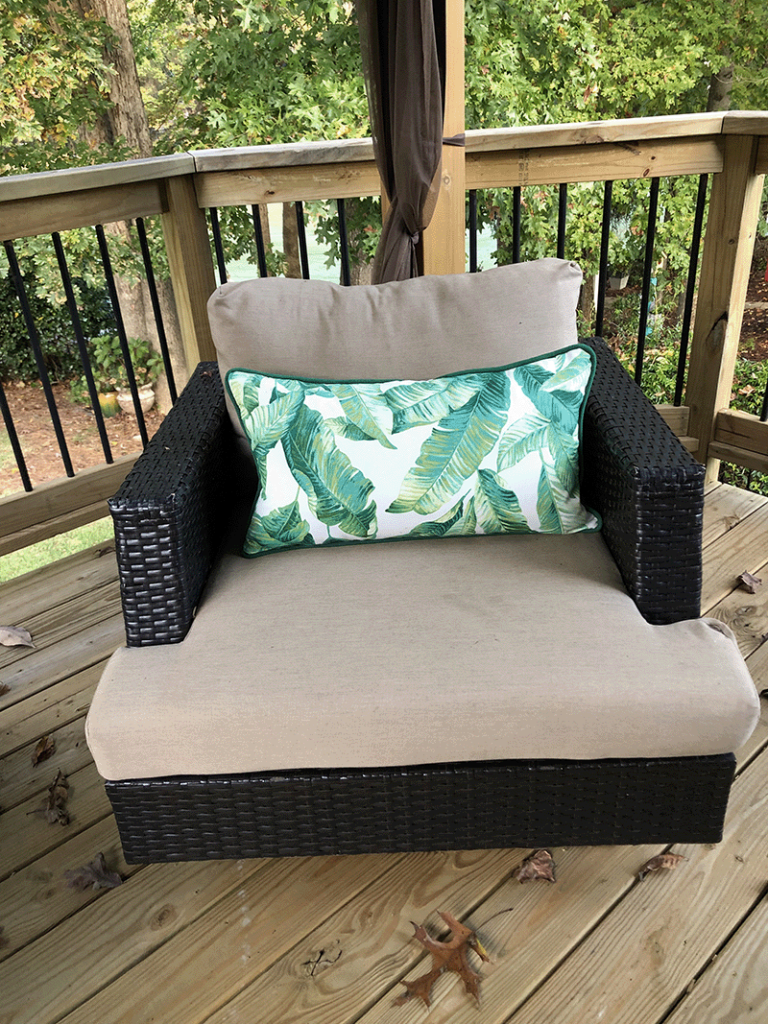Restoring Outdoor Furniture
Recently, the plastic wicker on our outdoor furniture had begun to break and fray, making the furniture look old and ratty. That’s when I decided to learn about restoring outdoor furniture.
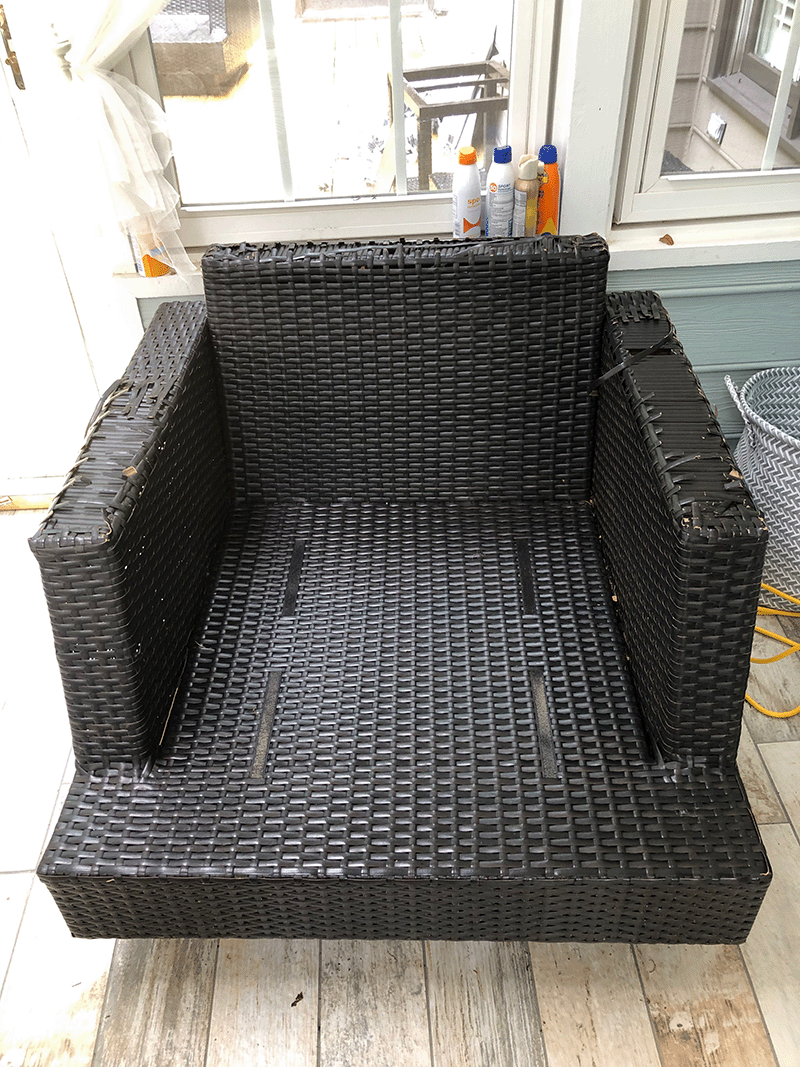
We purchased this furniture about 7 years ago, so it may have made sense to replace it. But the Sunbrella cushions that came with the furniture were still in great shape, so I decided to attempt to re-weave the wicker instead. At first, I thought I would need to remove the full pieces of strapping that had any breakage, but when I attempted that, I found that the furniture frame was metal. So I would have had to staple the straps to the metal frame – which was impossible to accomplish with the tools I had available.
So, I regrouped and decided to find a way to remove only the broken sections of the straps, and attach new sections to the remaining pieces.
Tools and materials for restoring outdoor furniture
These are the tools and materials I used for thos project:
- Household scissors
- PVC rattan strapping
- Small binder clips
- E6000 clear adhesive
The process
I used household scissors to cut away the brittle and broken sections of wicker. These were usually at the areas most exposed to bright sunlight, like the top edge of the arms and the top edge of the chair back.
I then cut pieces of the replacement rattan a few inches longer than each piece I removed. I used E6000 adhesive to glue the new rattan pieces to the end of the remaining original rattan, and used a small binder clip on each to hold it until completely dry and cured (at least a couple of hours).

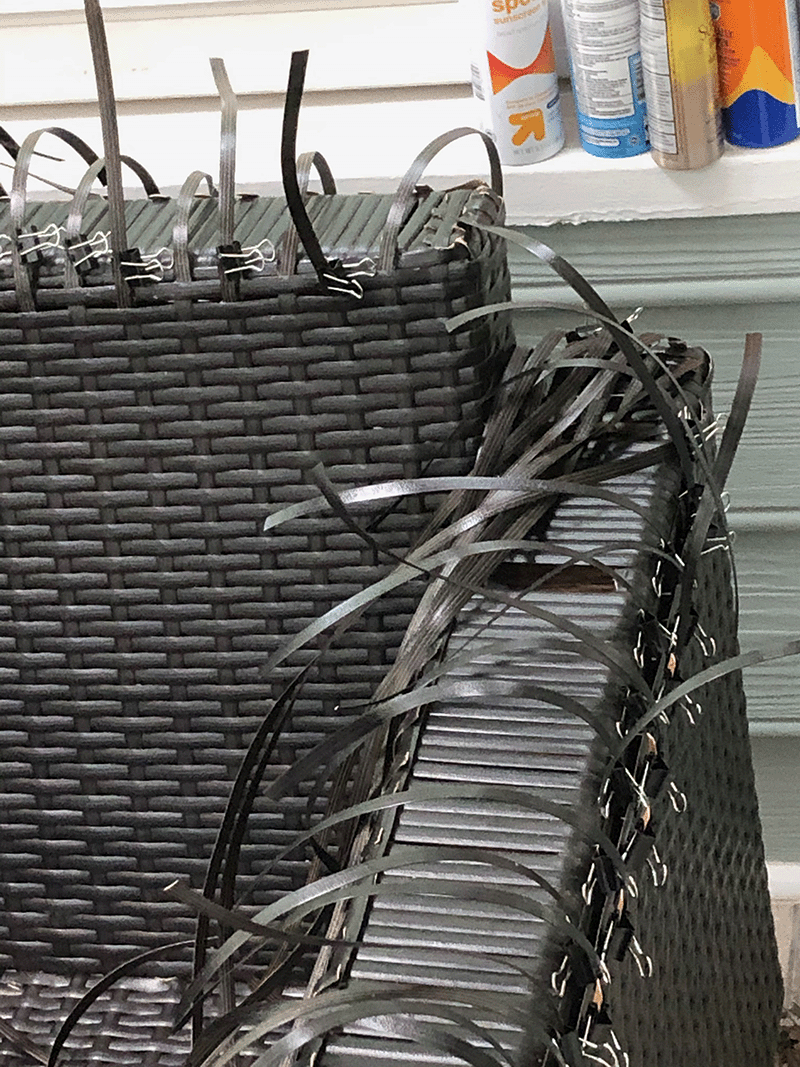
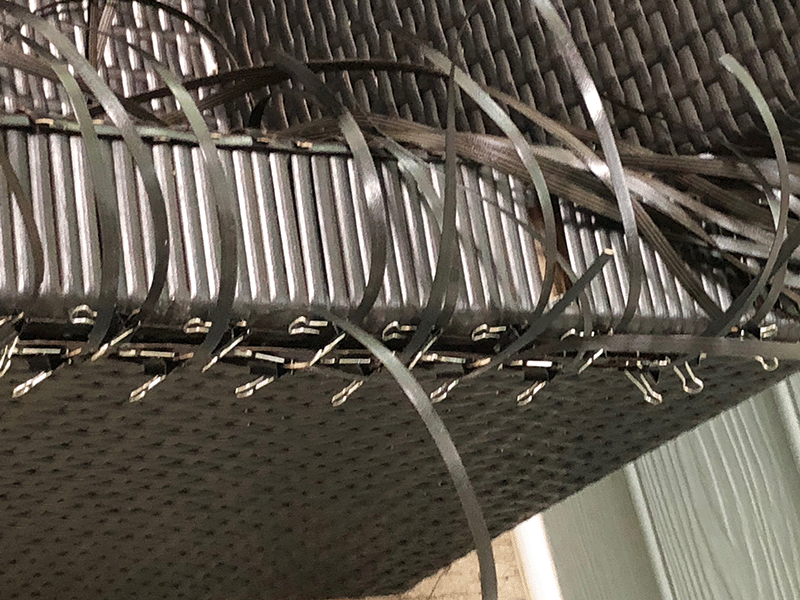
Tip: The trick to hiding the join between original and new rattan pieces is use the weave and glue the pieces together under a cross piece that passes over.
After the glue dried, I removed the binder clips and tested the join to make sure it held. Sometimes the pieces came apart at this point, so I would add more glue, replace the binder clip, and wait a while longer.
Once I was confident the joins would hold, I weaved the new pieces to match the original pattern, then glued the remaining ends into the far side, tucking the ends under existing pieces of the weave. After these ends dried, I used small, sharp scissors to trim off any extra end pieces.
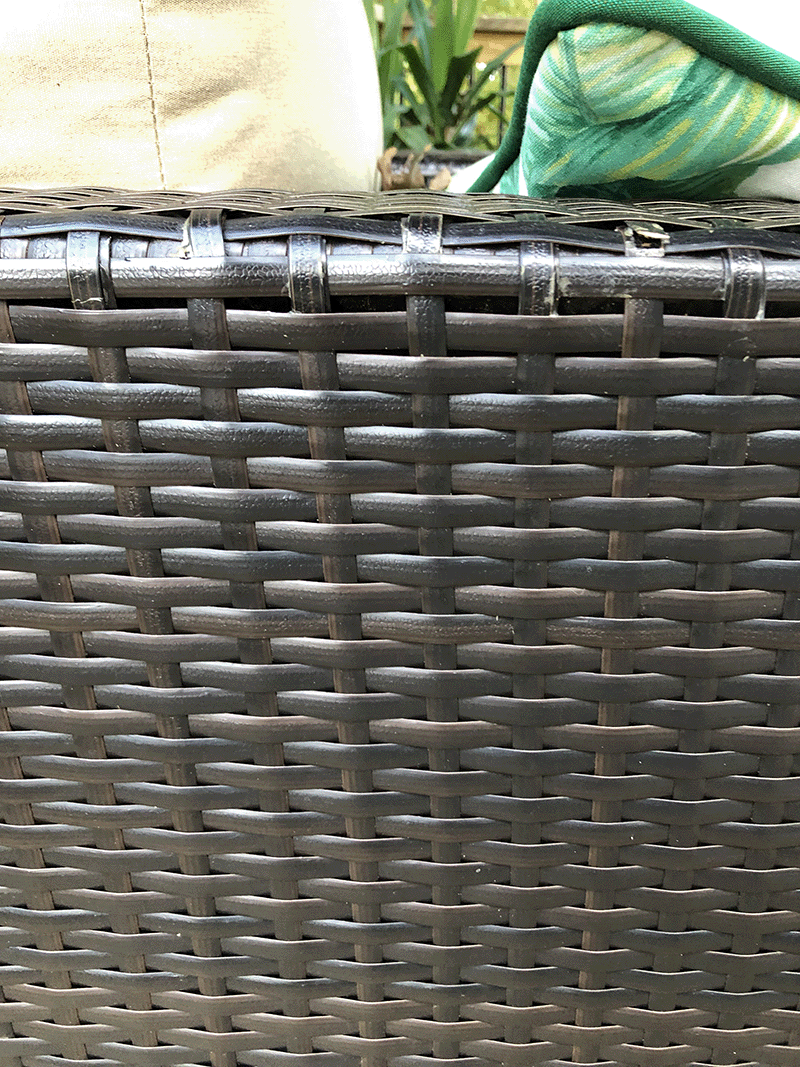
The results were not perfect, but they were good enough to extend the life of the furniture by a few years.

